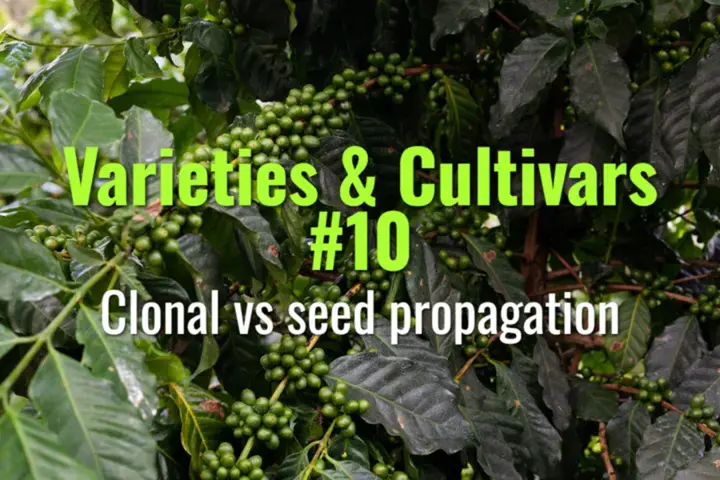Clonal vs seed propagation
This topic explains the two main methods of propagating coffee—clonal propagation and seed propagation—highlighting their differences, advantages, disadvantages, and implications for coffee farming.
- Coffee Basics Nerds
- 2 min read
Article 10 of 12 in Varieties & Cultivars/

Seed Propagation
- Definition: Raising coffee plants from seeds, the most traditional method.
- Advantages:
- Simple and inexpensive.
- Encourages genetic diversity, which can enhance resilience.
- Suitable for large-scale planting.
- Disadvantages:
- Greater genetic variability → less uniformity in growth, yield, and quality.
- Hybrid offspring may segregate, losing desired traits.
- Longer time to ensure stable traits.
Clonal Propagation
- Definition: Multiplying coffee plants asexually (cuttings, grafting, tissue culture) to produce genetically identical copies of a parent plant.
- Advantages:
- Preserves exact traits (yield, flavor, disease resistance) of elite mother plants.
- Uniformity in plant performance and cup quality.
- Faster maturity and more predictable yields.
- Disadvantages:
- Expensive and labor-intensive.
- Requires technical expertise and nursery facilities.
- Lower genetic diversity → plantations may be more vulnerable to new pests/diseases.
Methods of Clonal Propagation
- Stem cuttings: Common in Robusta production; cuttings rooted under controlled conditions.
- Grafting: Scion from desired variety grafted onto disease-resistant rootstock.
- Tissue culture: High-tech laboratory method, scalable but costly.
Comparative Overview
- Seed propagation: Cheap, diverse, less uniform, widely used for Arabica.
- Clonal propagation: Costly, uniform, preserves elite traits, common for Robusta and high-value Arabicas.
Agricultural Implications
- Smallholder farmers often rely on seeds due to cost.
- Large estates and research institutions favor clonal propagation for consistency.
- A mixed approach may provide resilience—seeds for diversity, clones for reliability.
Lasting Importance
The choice between clonal and seed propagation affects farm economics, resilience, and cup quality. While seeds ensure diversity, clones ensure uniformity. Sustainable strategies often combine both, safeguarding coffee’s future against climate and disease challenges.